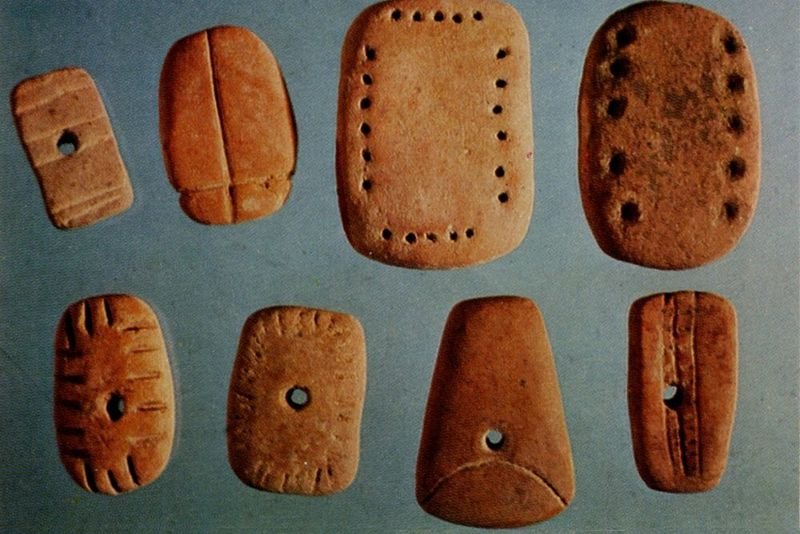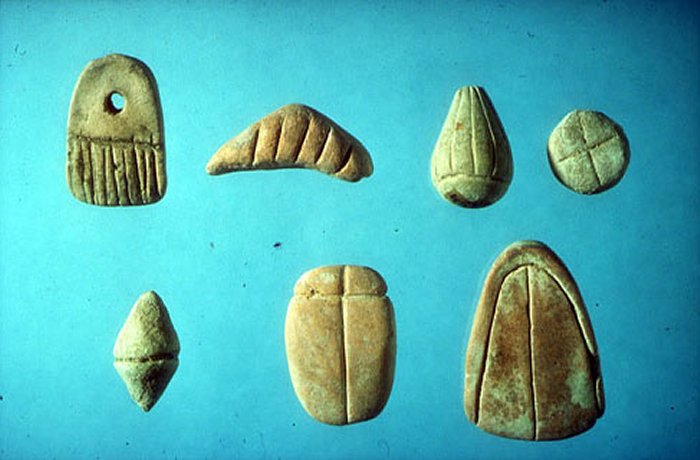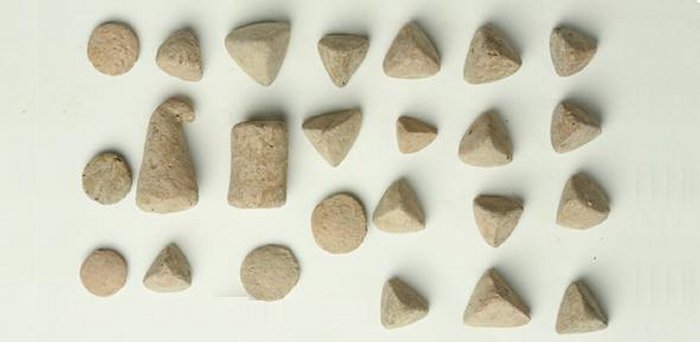Intriguing Sumerian Clay Tokens – An Ancient ‘Book Keeping’ System Used Long After Writing Appeared
AncientPages.com - About 5,000 years ago, people in Mesopotamia used intriguing clay tokens of multiple shapes to count and communicate.
People recorded information about their agricultural goods--including domestic animals and plants and to do so they used small clay tokens that were of different size and shape. Interestingly, archaeologists have discovered clay tokens were used long after writing was invented.
Sumerian clay tokens - Image credit: Denise Schmandt-Besserat
Sumerian clay tokens were often shaped like cones, spheres, disks, cylinders, tetrahedrons and ovoids and their size could vary from 0.5 to 1.25 inches.
Clay Tokens Could Be Used No Matter Of What Language You Spoke
The first tokens appeared in the Near East 7500 B.C. and they were made in the image of the goods they represented. For example, a cone abstracted a measure of grain.
Ovoids were jars of oil, cylinders a sheep or goat and tetrahedrons a person-day of work.
Sumerians used the tokens to count in a different way that we do today. We use abstract numbers, which means that our numbers “one,” “two,” “three,” are independent of the item counted and therefore universally applicable.
It was not so at the time when tokens were used. Between 7500-3100 BC, counting was restricted to selected units of goods, mostly measures of grain, jars of oil, animals and units of labor, based on time and task.
Moreover, each category of item was counted with its own counter, reflecting the fact that counting was “concrete,” meaning that each category of item was counted with a special numeration or special number words specific to that particular item.
See also:
‘Collata Quipu’ May Explain Messages Hidden In Mysterious Writing Of Inca
Controversial Tartaria Tablets: The First Writing System In The World?
The tokens were not difficult to produce. They were made of clay and incised with lines or dots or embellished with pellets of clay. These were then sun-dried or baked in a hearth.
Plain tokens from Jarmo, Iraq, ca. 6500 BC.
One great advantage with clay tokens was that they were non-lingual. It was an easy way to communicate because no matter what language you spoke, both parties understood that a cone meant a measure of grain.
Clay Tokens Were Used Even After The Cuneiform Script Appeared
It was previously thought that clay tokens were no longer used about 3,000 B.C because they were replaced by the cuneiform script, a more elaborate writing system.
Cuneiform tablets were one of the earliest systems of writing invented by the Sumerians. However, while excavating at Ziyaret Tepe, southeast Turkey, archaeologists uncovered a large number of clay tokens that were used as records of trade.
Scientists say clay tokens were integral to administrative functions right across the Assyrian empire – millennia after this system was believed to have vanished. Clay tokens were part of a prehistoric ‘book keeping’ system that continued long after invention of writing.
These clay tokens were found at a dig site in Turkey. Archaeologists think they were used as part of ancient system of record-keeping. Credit: Ziyaret Tepe Archaeological Project
Archaeologists say that while cuneiform writing was a more advanced accounting technology, by combining it with the flexibility of the tokens the ancient Assyrians created a record-keeping system of greater sophistication.
It should be added that Sumerians were not entirely the first to use a token system About 20,000 years ago, Upper Paleolithic people left marks and signs on walls and sticks to communicate. What is unique about clay tokens is that these artifacts represent the first significant step towards communication how storage and retrieval should be handled.
Copyright © AncientPages.com All rights reserved. This material may not be published, broadcast, rewritten or redistributed in whole or part without the express written permission of AncientPages.com
More From Ancient Pages
-
 Underground Labyrinth With Secret Passages, Tunnels In Dobrogea Plateau, Romania
Featured Stories | May 9, 2022
Underground Labyrinth With Secret Passages, Tunnels In Dobrogea Plateau, Romania
Featured Stories | May 9, 2022 -
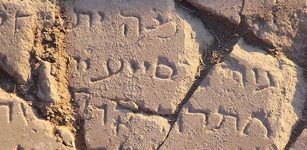 1,500-Year-Old Marble Slab With Inscription Found On East Coast Of Sea Of Galilee
Archaeology | Dec 18, 2015
1,500-Year-Old Marble Slab With Inscription Found On East Coast Of Sea Of Galilee
Archaeology | Dec 18, 2015 -
 Kikimora – Nightly Evil Female Spirit And Goddess Of Chickens In Slavic Beliefs
Featured Stories | Oct 22, 2018
Kikimora – Nightly Evil Female Spirit And Goddess Of Chickens In Slavic Beliefs
Featured Stories | Oct 22, 2018 -
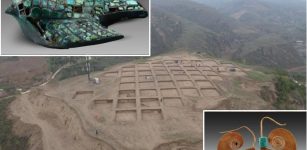 Fortified Bronze Age City Filled With Magnificent Ancient Treasures Solves A Mystery In China
Archaeology | Nov 21, 2023
Fortified Bronze Age City Filled With Magnificent Ancient Treasures Solves A Mystery In China
Archaeology | Nov 21, 2023 -
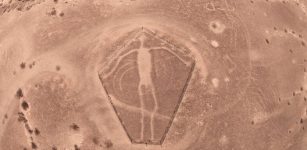 Cryptic North American Blythe Intaglios Reveal The Creator Of Life: Who Was This Unknown Being?
Featured Stories | Aug 23, 2014
Cryptic North American Blythe Intaglios Reveal The Creator Of Life: Who Was This Unknown Being?
Featured Stories | Aug 23, 2014 -
 A Rare Pre-Roman Tomb Unearthed In Pompeii
News | Sep 22, 2015
A Rare Pre-Roman Tomb Unearthed In Pompeii
News | Sep 22, 2015 -
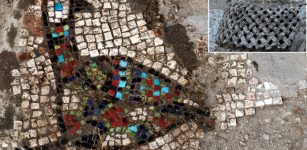 St. Simeon’s Monastery And History Of Its Founder Shed Light On Christian Past In Anatolia
Archaeology | Nov 28, 2020
St. Simeon’s Monastery And History Of Its Founder Shed Light On Christian Past In Anatolia
Archaeology | Nov 28, 2020 -
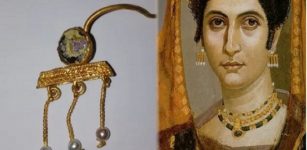 Gold Earring Found In Ruins Of Ancient Roman Colony Deultum In Bulgaria
Archaeology | Oct 11, 2020
Gold Earring Found In Ruins Of Ancient Roman Colony Deultum In Bulgaria
Archaeology | Oct 11, 2020 -
 Unique Ancient Roman Boxing Gloves Discovered Near Hadrian’s Wall – The Only Surviving Example From 120 A.D.
Archaeology | Feb 20, 2018
Unique Ancient Roman Boxing Gloves Discovered Near Hadrian’s Wall – The Only Surviving Example From 120 A.D.
Archaeology | Feb 20, 2018 -
 Unique 3,300-Year-Old Hittite Bracelet With Symbols Discovered By Farmer
Archaeology | Mar 28, 2022
Unique 3,300-Year-Old Hittite Bracelet With Symbols Discovered By Farmer
Archaeology | Mar 28, 2022 -
 Fossil Study: Coelacanths Thrived In Switzerland After A Mass Extinction
Fossils | Jul 28, 2023
Fossil Study: Coelacanths Thrived In Switzerland After A Mass Extinction
Fossils | Jul 28, 2023 -
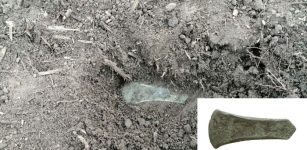 Rare Early Bronze Age Axe Discovered In Slovakia
Archaeology | Jul 2, 2022
Rare Early Bronze Age Axe Discovered In Slovakia
Archaeology | Jul 2, 2022 -
 A 200-Year-Old Swedish Mystery Remains Unsolved
Featured Stories | Oct 7, 2015
A 200-Year-Old Swedish Mystery Remains Unsolved
Featured Stories | Oct 7, 2015 -
 On This Day In History: Powerful Warlord And Emissary Of Spear-Thrower-Owl Arrived At Tikal – On Jan 8, 378 AD
News | Jan 8, 2017
On This Day In History: Powerful Warlord And Emissary Of Spear-Thrower-Owl Arrived At Tikal – On Jan 8, 378 AD
News | Jan 8, 2017 -
 Evidence Of The Moon-Eyed People – More Clues – Part 2
Civilizations | Dec 29, 2019
Evidence Of The Moon-Eyed People – More Clues – Part 2
Civilizations | Dec 29, 2019 -
 Manx: Ancient Dead Gaelic Language That Refused To Die And Has Been Revived Again
Ancient History Facts | Oct 7, 2016
Manx: Ancient Dead Gaelic Language That Refused To Die And Has Been Revived Again
Ancient History Facts | Oct 7, 2016 -
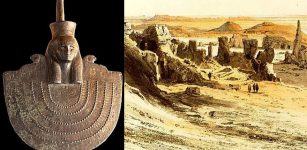 City Of Sais: Prehistoric Prestigious Cult Center Of Northern Egypt
Featured Stories | Oct 31, 2016
City Of Sais: Prehistoric Prestigious Cult Center Of Northern Egypt
Featured Stories | Oct 31, 2016 -
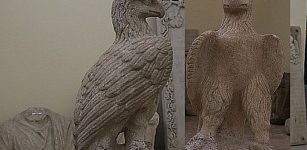 Two 2,000-Year-Old Marble Eagle Statues Found In Anatolian Hellenistic Temple
Archaeology | Aug 12, 2019
Two 2,000-Year-Old Marble Eagle Statues Found In Anatolian Hellenistic Temple
Archaeology | Aug 12, 2019 -
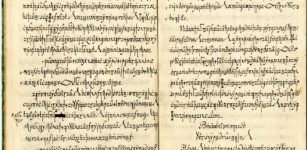 Copiale Cipher – Secrets Of Mysterious Coded Manuscript And The Oculist Order
Artifacts | Feb 4, 2019
Copiale Cipher – Secrets Of Mysterious Coded Manuscript And The Oculist Order
Artifacts | Feb 4, 2019 -
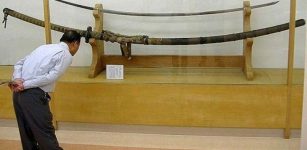 The Norimitsu Odachi – Giant Japanese Sword Remains An Enigma
Artifacts | Mar 22, 2019
The Norimitsu Odachi – Giant Japanese Sword Remains An Enigma
Artifacts | Mar 22, 2019

